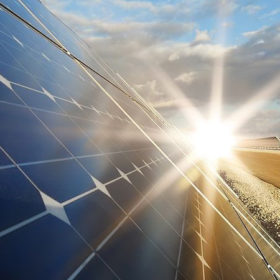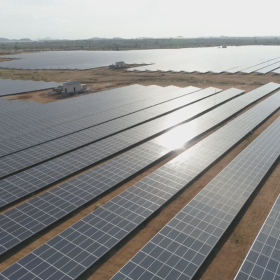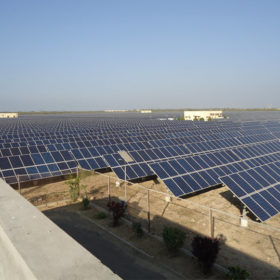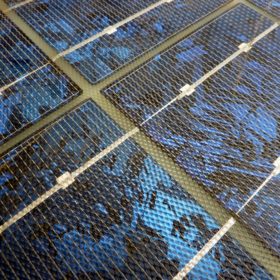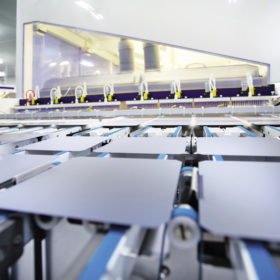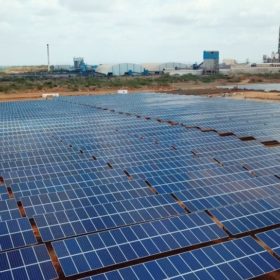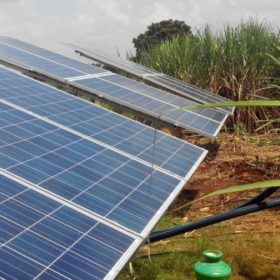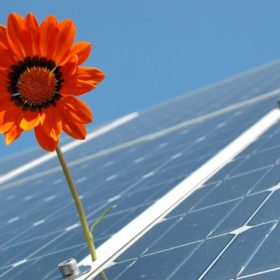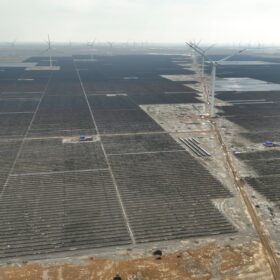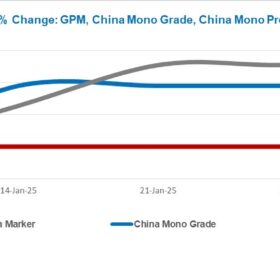Earth’s magnetic field affecting PV panel performance
Researchers in Kenya say the geomagnetic field could reduce solar panel conversion efficiency 0.21% between the equator and a 50-degree latitude. Their analysis showed the complex magnetic field can determine increases in module fill factor and falls in maximum power.
Azure Power Q4 revenues up 29%, but net loss at Rs 394 million
The New Delhi based developer posted a net loss of Rs 394 million (US$5.2 million) for the three-month period from January to March, mainly on account of higher charges amounting to Rs 551 million (US$ 7.3 million) that were partially offset by higher revenue.
Indian Railways tenders 400 MW of grid-connected solar
Bidders have until September 16 to pitch for generation capacity which can be installed on vacant land owned by the rail company nationwide.
Two-week bidding extension for SCCL’s 81 MW solar
Developers now have 14 more days to submit bids for 34 MW (AC) ground based, 32 MW (AC) over-burden dump based and 15 MW (AC) floating solar plants at Singareni Collieries Company Limited (SCCL) sites in Telangana state.
Tata Power to develop 120 MW solar project in Gujarat
The integrated power producer’s renewable capacity will now swell to 3,457 MW. Of this, 2,637 MW (932 MW wind and 1705 MW solar) is operational and 820 MW solar (including the latest 120 MW won from Gujarat Urja Vikas Nigam Limited) under implementation.
CEL opens tender to procure 3 lakh multicrystalline solar cells
Only domestic manufacturers with multicrystalline solar cell production capacity of a minimum 30 MW per annum are eligible to apply. Bidding closes on June 27.
The long read: Criteria and implications for gallium-doping
As a remedy for light-induced degradation (LID) in crystalline silicon cells, gallium-doped wafers are showing considerable promise. With reports that ingot growth productivity can rival that of boron doping, it seems that gallium doping may now be able to meet the cost, integration and performance criteria that have informed solar manufacturing technology adoption, writes Alex Barrows, senior research analyst at U.K.-based consultancy Exawatt.
SECI tenders 10 MW grid-connected solar in Rajasthan
Tariff ceiling is fixed at Rs 3.20/kWh for the ground-mounted projects that are to be set up on build-own-operate basis. July 24 is the last date to bid.
Andhra Pradesh set for 10 GW of agricultural solar
The state—which commissioned an aggregate 3530.74 MW solar capacity as of May 31, 2020—will set up the new plants to ensure nine hours of free power supply to the agriculture sector.
Bringing back India’s solar sector to the front foot in 2021
The ‘175 GW by 2022’ renewable energy target seems unachievable, necessitating the benchmark be moved to ‘450 GW by 2030’ instead. But even that will require the sector to move back to the front foot from 2021.


